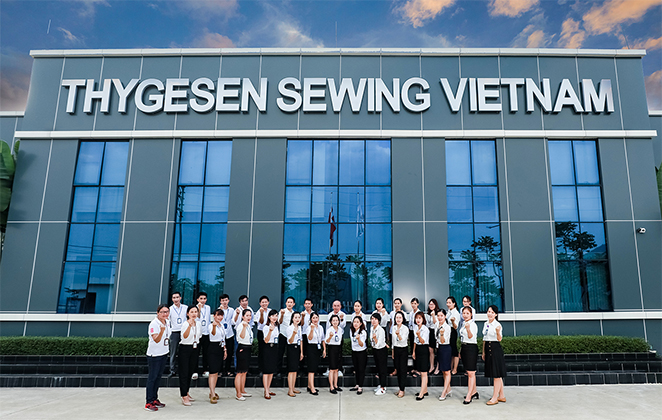Custom clothing manufacturing – a service
What are included in this service?
There are plenty of kinds of custom garment manufacturing services that vary from CM, CMPT, to FOB, OEM, ODM, and One-Stop-Shop services.
An OEM, ODM takes part in the stage of designing, developing samples, and making patterns. The buyer sometimes just send them some images or draw of their products or some raw ideas, they would help to bring it to life accordingly. All would be carried out in a unified process to save time, expense, and effort. Compared to their buyer, they may know more about technical design. It means that they can help their customers to develop technical designs to make them more friendly with industrial manufacturing techniques.
In addition, working with so many different customers from plenty of markets all over the world with infinite divergent demands, service suppliers would have profound knowledge and experience to keep themselves updated with trends and innovation in the materials industry. Furthermore, they might be backed by a wide network of fabrics & accessories suppliers helping the developing new kinds of materials.
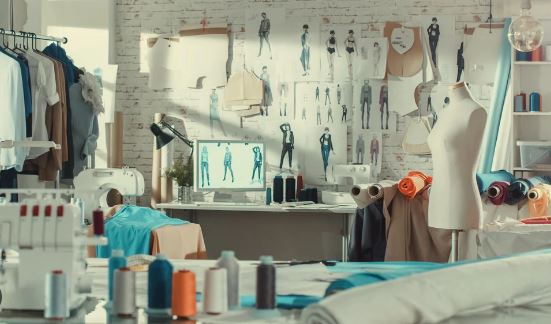

The benefit of this service
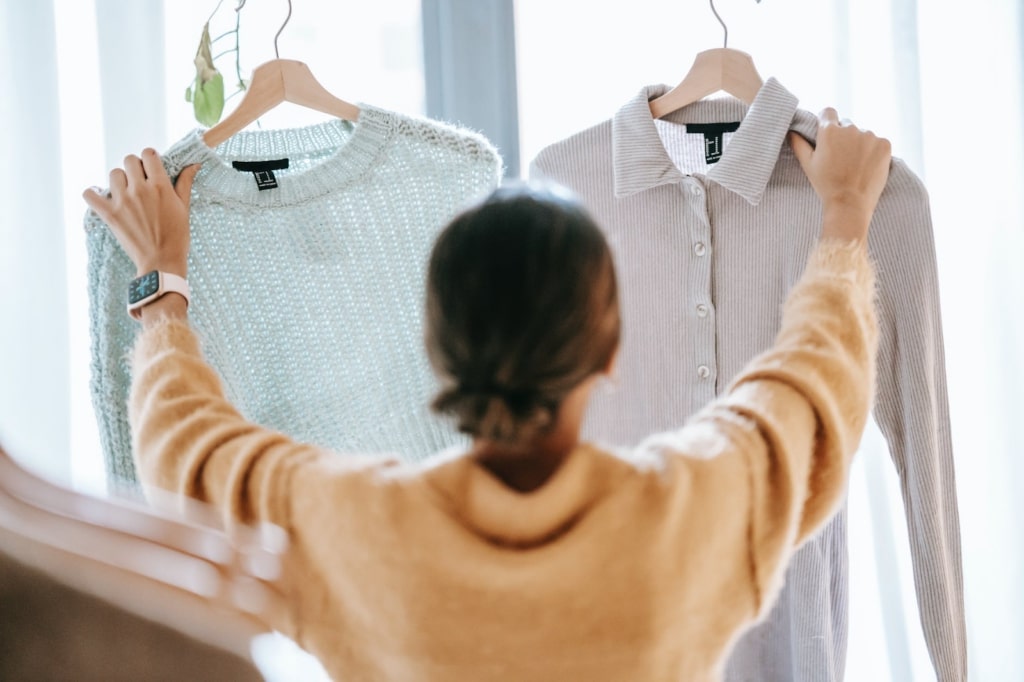
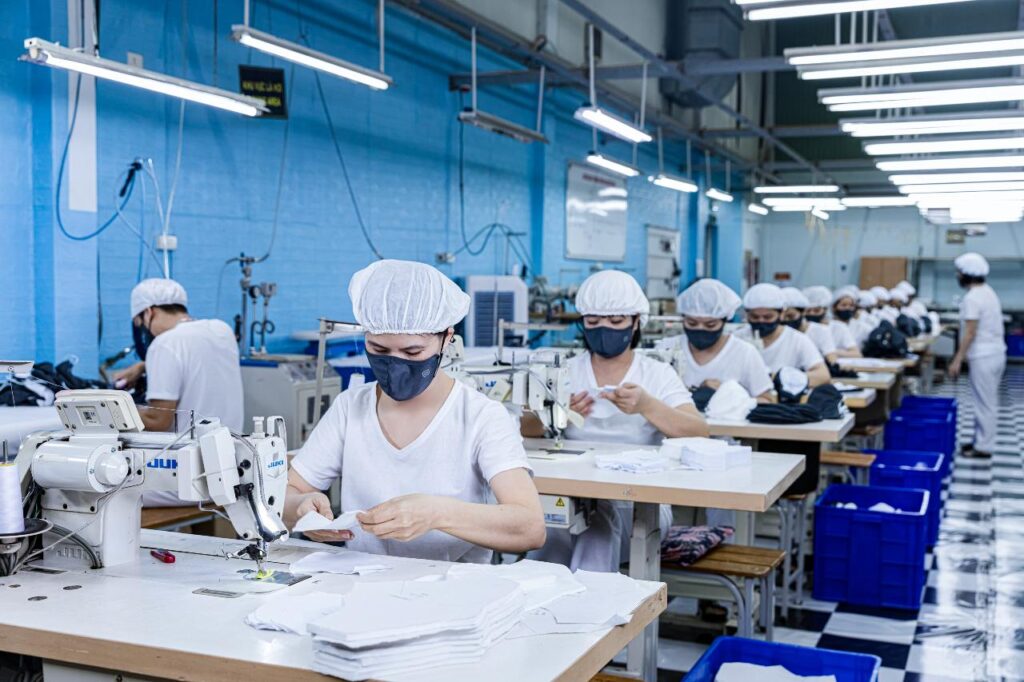
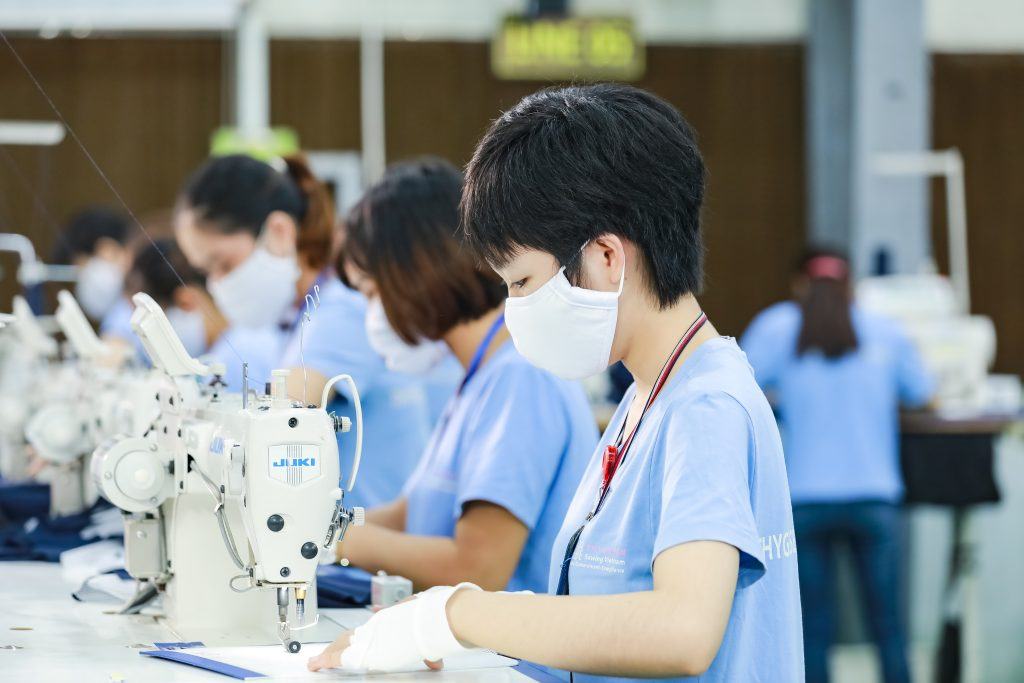
Benefits for customers
By hiring a custom clothing manufacturing, you will not need to invest in a bulky manufacturing factory and operate many people by yourself. It’s not easy to operate and manage a system of hundreds or thousands of people and machines to maximize productivity.
It would cost you not a substantial amount of money and effort. If you have a potential market, just concentrate on how to satisfy your customers better, let the manufacturer help you to cover the manufacturing process. You will also not need to waste your effort to fulfill those factory capacities to maximize its proficiency and shorter the payback period.
Benefits for factories
Manufacturers in turn would also gain a lot from the custom clothing manufacturing service. Manufacturing according to orders will minimize their risk of inventory which is one of the most popular risks that lead to the companies’ bankrupt. It’s also easier for them to forecast the customer’s demand each year to have a good preparation.
They would not need to follow any risky trend too. In terms of finance, the buyer always needs to pay a certain amount of money in advance as a deposit. It can be considered that the manufacturer is receiving commercial finance from their customers. Compared to the model of self-manufacturing & self-distribution, the manufacturer has a much smaller risk.
Benefits for the labors
Clothing manufacturing is a labor-intensive industry. It creates a lot of jobs for unskilled poor people. In traditional agriculture countries like Vietnam, farmers have a lot of free time without a certain job for a stable source of income.
Garment manufacturing does not require too much time, effort, or investment in master needed skills. The majority of the Vietnamese population is living in the poor countryside with a very unstable income. Clothing manufacturing would bring them a good opportunity to change their life.
How Clothes Are Made? Discovering The Garments Manufacturing Process
Pre-Production
1. Design garment
The first assignment is for the brand to come up with its own designs for the products. If you want to develop your own designs, it’s better to do some inspiration shopping or give a look through recent fashion collections to have some ideas about the latest trends and consumer favorites. Next, get some paper and a pen to start sketching out your ideas. You might also want to hire a professional graphic artist to help execute your vision better.
2. Source fabric and trims
When you are finished with your design, you can start choosing the fabric and trims needed to bring your garment to life. Based on the design and requirements of the product, you will move to the fabric and material sourcing stage.

Experts in the clothing manufacturing industry will have a list of textile suppliers that can provide a diverse range of materials ready. Once you are sure with your selection of fabrics, you may need to get an FDS. FDS stands for a Fabric Data Sheet, in which important details about your materials are specified so that the clothing producer can have a clear idea of your garment components. Some of the essential information includes fabric name, fiber content, fabric weave or knit type, or yarn size.


3. Make patterns
After that, it’s time to make a pattern, or garment forms, which will be necessary for fabric cutting. This is when the design is taken apart into 2D pieces. Small local brands might be accustomed to making the pattern by hand on paper; nonetheless, it can prove to be a completely tiring and time-consuming process. You can opt for a local sample maker – however, keep in mind that they are quite expensive.
A much cheaper alternative is to work with an experienced clothing manufacturer that can produce your patterns into a file on your laptop. Yes, patterns can now be digitized. The specialist takes the paper form and lays it on the digitizer where the paper pattern is transferred into their own software. This would lead to a quicker solution with high accuracy, high-quality pattern, and reasonable price.
6. Grade patterns
Pattern grading is the process of using grading increments or a size specification sheet to turn the sample size patterns into additional sizes. Remember that grading only makes a shape larger/smaller and is not for changing the shape.
Often the sample is made in small or medium size. Increase and decrease the sizes so that it can cover all your target customers. For example, it is vital that you take your size range into consideration if you are building a brand for plus-sized consumers or your audience varies in size a lot (such as for kids’ clothing).

4. Print out patterns
Next, the patterns are laid out in a specific order and printed out on the plotter using an automated cutting system. This step is quickly done by the software and the specialized cutting equipment. The patterns are ready for the sample development stage.
5. Develop sample
Cutting
Samples are essential because they are the prototype of your garment creation. After the patterns are laid out and fabrics are marked comes the cutting operation. This is one of the most pivotal steps since once the fabric has been cut, you cannot repair it when serious flaws pop up. Besides, the fabric is the most costly item in the clothing production process. That’s why clothing manufacturers are in charge of ensuring minimum material wastage without risking any defects.
In clothing manufacturing facilities, the same fabric articles are layered on top of each other and cut in bulk. There are several types of cutting equipment: manual cutting machines such as scissors, semi-auto cutting machines, fully automatic cutting machines such as laser cutting machines.
Screenprint and embroidery

If you want to add logos and other designs to clothes and other textiles, screen printing and embroidery are your two primary options. Embroidery is the process of transforming graphic arts into a needle and thread on the fabric. Screen printing is when the specialist presses the graphics on the textile using paint-based ink and then dries it out. Embroidery creates a 3D look that makes the emblem stand out. However, you will not see embroidery on complex designs as recreating intricate patterns on the surface is quite burdensome with needles and threads. Screen printing is the perfect selection to put art, logos, etc. on a range of products such as T-shirts, Hoodies, or uniforms by the latest printing technologies.
Assembling
After the sewing machine is adjusted and tested carefully, the fabric pieces are finally laid out and sewn together. At last, you start to see your design coming to life. Once the samples are completed, the specialist will make the final touches before sending them to grading and future bulk production.
Production




Quality control
Your wholesale clothing manufacturer will replicate all the garment-making processes on the production line. Sewing machine operators will receive a pile of cut fabric and only sew one portion of the clothing item before passing it down to the next operator. A specialist will perform quality control at the end of the sewing line to assure that the items are properly assembled, and defects are found in a timely manner. If necessary, the garment can be returned to the sewing stations to be taken apart for any fixing or mending. Your company also has some time to review the garments and do quality assurance to see if they are up to your requirements.
Spot cleaning and laundry
Besides identifying errors, workers doing quality control also need to look for any spot or stain on the garment that may have occurred during the cutting and sewing operations. They will then mark the spots with a sticker and send the flawed garments to a spot-cleaning station where the stains are treated using steam, hot water, or some type of stain remover that will not damage the intricate work.
Your company may also ask for all garments to be laundered after assembly. This can be done on-site if the factory is facilitated with at least 3 types of equipment: washers, spinners, and dryers. Sometimes, however, manufacturers may work with a third-party contractor to have them launder the finished garments.
Fusing and pressing
Fusing gives support and stabilizes areas of a panel ready to be attached to a garment.
This is used for reinforcement and helps the fabric avoid stretching. Pressing means ironing the garment so as to put the final seal on your product. Typical machinery used in pressing and finishing is hand irons, scissors press, steam dolly, and carousel machines. First, the fabric is relaxed by the steam and heat coming from the irons.
Next, the fibers are set into their positions by applying enough pressure. The garment is then dried and cooled for the fabric to return to its normal state. To do this, the employees will use a vacuum to suction out all the spare water in the cloth.
Packaging and shipping
In the final step of clothing manufacture, the garments are sized, folded, tagged, and packaged. You as a recipient can make requests on the type of bags, boxes, or hangers to use, and how many pieces to put in a box, etc. You need to pay extra attention to the packaging terms in your contracts because a specific type of clothing item requests particularities in the packing stage. For instance, hanging garments like dresses and skirts should be carefully packaged and bagged; otherwise, they would end up wrinkly.
What does a custom clothing manufacturer need to be a good one?
Their capacity
Their capacity is the first requirement that they need to meet to survive and develop in this industry. It doesn’t mean that a manufacturer with huge capacity would always succeed and dominate the industry. Therefore, the capacity of a custom clothing manufacturing service supplier can be measured by their ability to be flexible and adaptive to their customer’s needs.
Their strategy
Their strategy will nominate almost all other activities. Firstly, they must have in-house yarn & fabric experts to cover for material development. They have to own a strong sourcing team to find the best source of accessories and fabric. Designers and technicians are also needed to be available in their offices to bring their customer’s ideas to realistic industrial design. They also need to have a good production system and a very strong logistics department to operate everything smoothly…
Vietnam has long been known as home to textile and garment manufacturers
High quality
Thanks to advanced sewing capabilities, Vietnam clothing factories are not only capable of producing a wide range of items but also have always ensured premium product quality at reasonable prices. Aiming to deliver excellence, a number of manufactures put an emphasis on inspecting the materials and quality control so that the garments are consistently satisfactory to the clients. In fact, with the best clothing manufacturers there, you will be likely to have finished products whose quality is among the top 10% of the world.
Moreover, the clothing production costs in Vietnam are competitive compared to other countries like Mexico and China since one of the main advantages of the Vietnamese manufacturing industry lies in its low labor cost. It is observable that many Vietnamese, especially those who are underprivileged, consider working for clothing factories at minimum wages as a good livelihood. .
Lead time benefits
Thanks to a steadily available flow of skilled workers, Vietnamese manufacturers can respond to your ideas quickly, thus making sure that you receive the products as soon as market trends emerge. By working with some of the best clothing manufacturers in Vietnam, you can cut the time it takes to design, develop fabric, test samples, and bulk produce.
Furthermore, in the fast fashion industry, the Make to Market rate, also known as the Speed to market rate, is a very significant parameter when deciding the best clothing factories. A rise in this number, which measures the pace at which garments go from being manufactured to getting store displays for sale, would typically increase the advantages your business will r
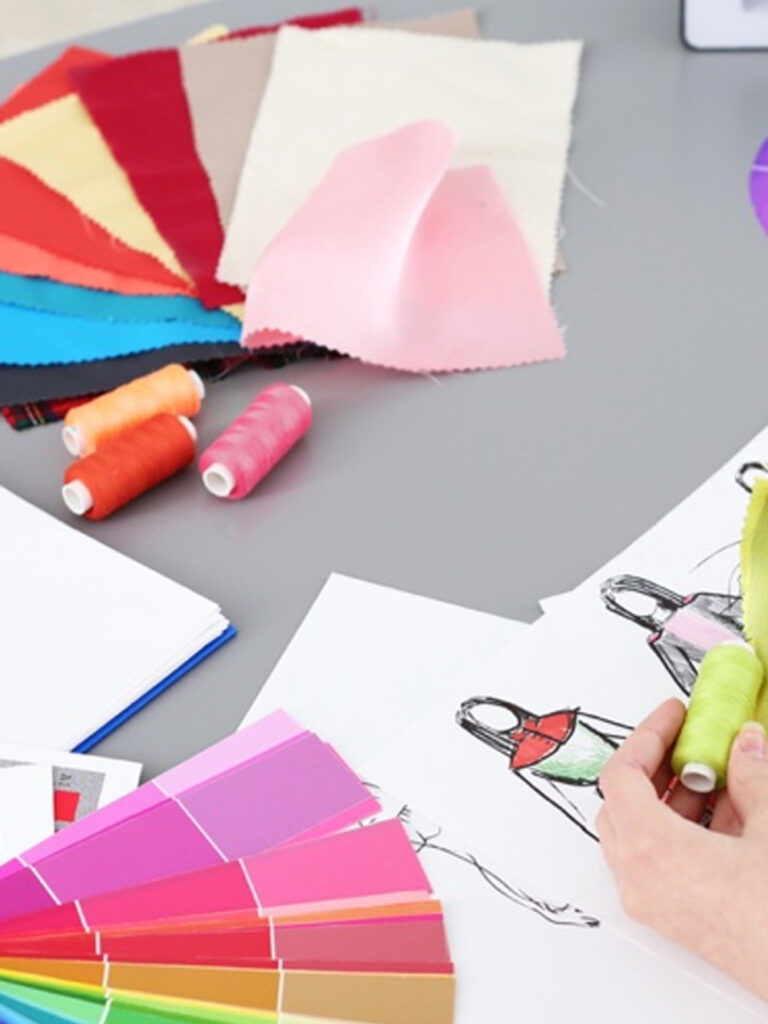
Why is Thygesen Textile Vietnam the leading company in clothing design and manufacturer?
Inspiring product range



Activewear
Encouraging the creation of active and healthy lifestyles for global active brands, our OEM/ODM service provides a full range of activewear: tank tops, leggings, joggers… We focus on high-quality products and functional fabrics to provide wearers with the best comfort and support throughout the day.
Kidswear
With the target of bringing the safest and most comfortable clothes worldwide to kidswear brands, we dedicate ourselves to premium quality and highly functional knitted wear. All kinds of kids’ clothing types with special fabric such as animal hoodies, baby bodysuits, or baby jumpsuits can be found here, certified with OEKO-TEX 100 and CE Standard, of course.
Fashionwear
For a common product line like Casual & Fashion wear, Thygesen offers various styles, from the very basic to the most trendy, all up to your requirements. Our international standardized factories, latest technology, modern machines, and skillful labor can assist you in producing high-quality items, while our application of LEAN manufacturing can help to reduce your lead time.
Thygesen Textile Vietnam’s OEM services
With our OEM services, you will have more opportunities for new products. The brand has the original idea and processes like testing and branding ready to go and it requires a manufacturer that offers skilled labor and supply chains at reduced costs.
With our experienced labor and supply chains, we can totally meet the needs of customers’ product demand. At Thygesen Textile Vietnam, we have a high operational capacity of more than 350,000 pieces per month. Therefore, we can easily cater to your high-volume order, ensuring quality & timely delivery.
OEM services in Thygesen Textile Vietnam also control over customization of the customers. We always ensure the integrity of your intellectual property because the manufactured products will always be exactly as requested by the customer and there will be no deviation.
There will be no limitation of OEM service in your fabric choices for your design. We not only use advanced systems to produce but also provide you with access to our huge fabric bank. Thanks to new technologies, new generation polyesters such as Aerocool, Aerogear, and Aerosilver have been created and are well applied to the new fabrics of Thygesen Textile Vietnam. Moreover, you will never have fabric limit problems when working with us because our in-house experts always have the best solutions for you.

Thygesen Textile Vietnam ODM services
With Thygesen Textile Vietnam’s ODM service, you can save time in the setting up period because you mustn’t spend a lot of time coming up with product designs, consulting suppliers, and arranging custom production lines.
There’s no need to spend financial resources on R&D and designing products from scratch. By leaving most of the technical aspects to ODM suppliers, who have a wealth of knowledge in manufacturing, you can allocate more resources in market research, brand development, and product marketing.
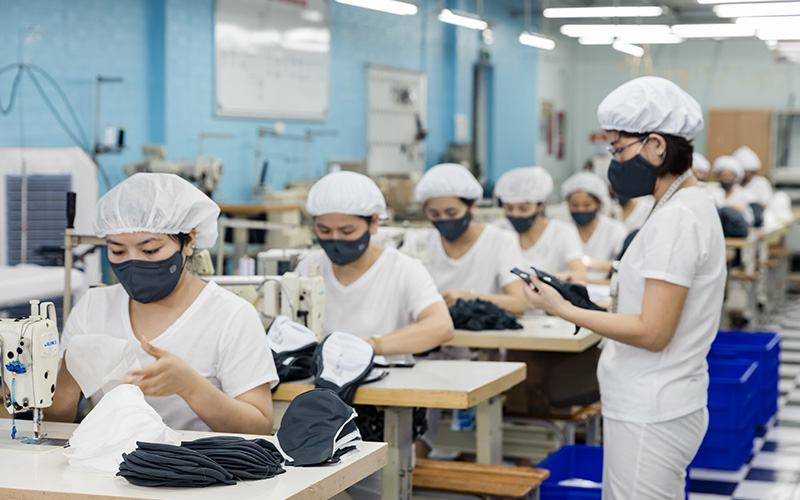
With our ODM service, marketing, and selling pre-produced, finished products are much easier and quicker compared to a component product. Before ODM manufacturing appeared, many businesses had to place orders in enormous quantities and value. Thanks to ODM manufacturers, you will have the opportunity to test several different products on the market first, therefore, it will be easier for you to build a reasonable marketing and sales strategy. This will not only save costs but also minimize potential risks during the sales process.


